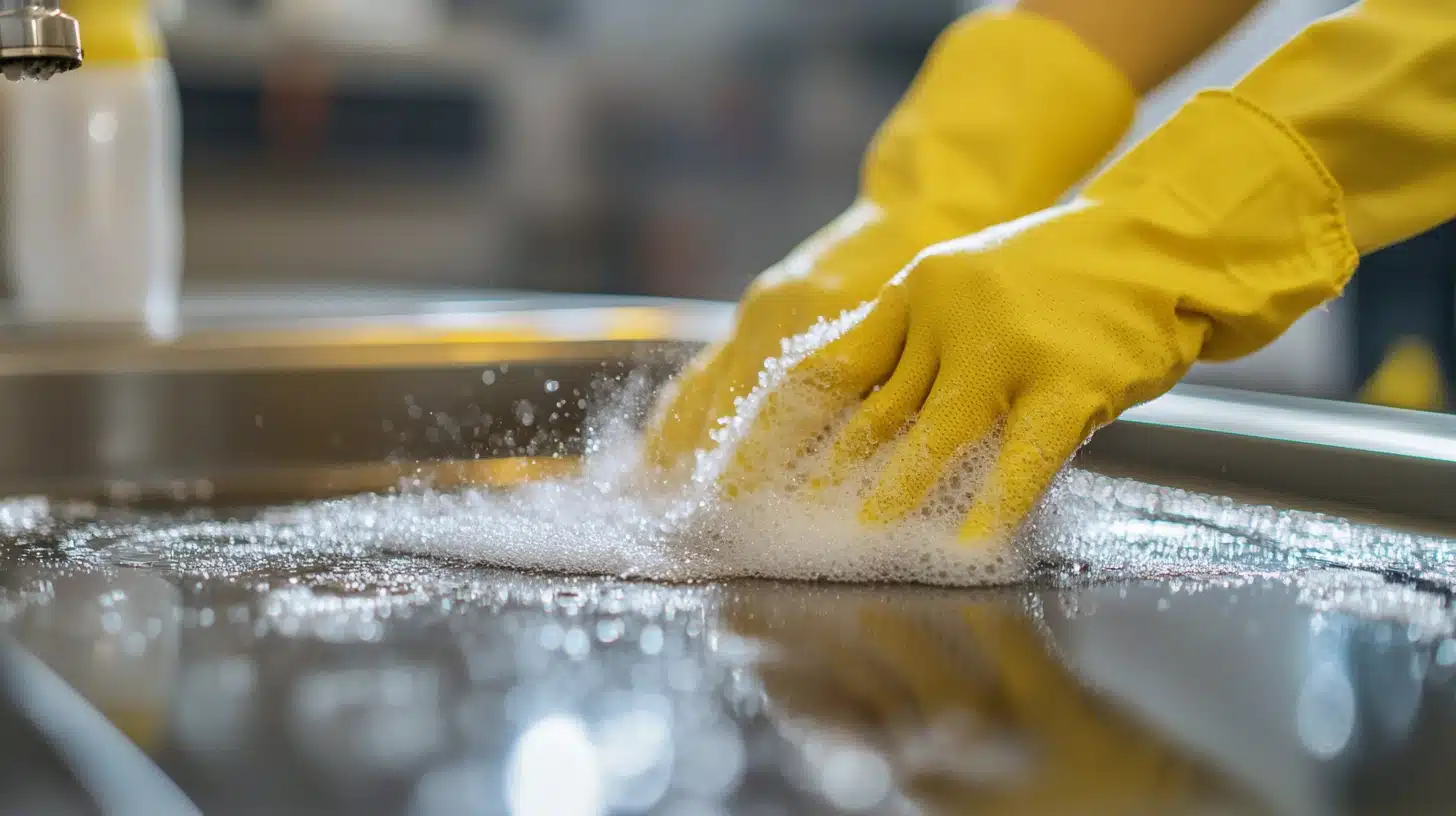
Limescale is a common problem in many households, particularly in areas with hard water. Over time, limescale can accumulate in bathrooms, kitchens, and on appliances, leading to unsightly stains, reduced efficiency, and even damage to fixtures.
Removing thick limescale can seem like a daunting task, but with the right methods and tools, it can be tackled effectively. This article will provide detailed guidance on how to remove thick limescale from various surfaces and prevent its recurrence.
Understanding Limescale
Limescale is a chalky, white deposit that forms when water containing high levels of calcium and magnesium evaporates. These mineral deposits accumulate over time and can become stubborn if left untreated. Common areas affected by limescale include:
- Bathroom fixtures (e.g., taps, showerheads, tiles)
- Kitchen appliances (e.g., kettles, dishwashers, washing machines)
- Pipes and water heaters
Understanding the nature of limescale is crucial for choosing the right removal method.
Tools and Materials You’ll Need
Before you begin, gather the following tools and materials:
- White vinegar or lemon juice (natural acids)
- Commercial limescale remover (for tougher stains)
- Baking soda
- Scrubbing brushes or sponges
- Microfiber cloths
- Plastic bags and rubber bands (for soaking fixtures)
- Protective gloves
Step-by-Step Guide to Removing Thick Limescale
1. Removing Limescale from Bathroom Fixtures
Taps and Showerheads
- Prepare a Soaking Solution: Fill a plastic bag with white vinegar or a mixture of vinegar and water.
- Attach the Bag: Secure the bag around the tap or showerhead with a rubber band, ensuring the limescale-affected area is submerged.
- Let It Sit: Leave it to soak for a few hours or overnight for thick deposits.
- Scrub and Rinse: Remove the bag, scrub the area with a brush, and rinse thoroughly with water.
Tiles and Glass Surfaces
- Apply Vinegar or Lemon Juice: Spray the solution directly onto the affected areas.
- Let It Work: Allow the acid to sit for 10-15 minutes to break down the limescale.
- Scrub Gently: Use a non-abrasive sponge or brush to scrub the surface.
- Rinse and Wipe Dry: Rinse with clean water and dry with a microfiber cloth to prevent watermarks.
2. Cleaning Kitchen Appliances
Kettles
- Create a Solution: Mix equal parts of water and vinegar or lemon juice.
- Boil the Mixture: Pour it into the kettle and bring it to a boil.
- Let It Sit: Turn off the heat and let the solution sit for 30 minutes.
- Rinse Thoroughly: Empty the kettle, scrub any remaining deposits, and rinse several times.
Dishwashers and Washing Machines
- Run an Empty Cycle: Pour a cup of white vinegar into the detergent compartment.
- Set to Hot: Run an empty cycle at the hottest setting to dissolve limescale.
- Repeat Monthly: Regular cleaning prevents future build-up.
3. Descaling Water Heaters and Pipes
- Use a Commercial Descaler: Follow the manufacturer’s instructions for safe usage.
- Flush the System: After descaling, flush the heater or pipes with fresh water to remove residue.
- Hire a Professional: For extensive build-up, consider professional cleaning services.
4. Handling Stubborn Limescale
For particularly thick or stubborn limescale:
- Baking Soda Paste: Mix baking soda with water to form a paste. Apply it to the affected area and let it sit for 15-20 minutes before scrubbing.
- Use a Stronger Cleaner: If natural methods fail, use a commercial limescale remover. Always follow safety instructions and wear gloves.
5. Preventing Future Limescale Build-Up
Prevention is key to avoiding thick limescale deposits in the future:
- Install a Water Softener: A water softener can reduce the mineral content in hard water.
- Wipe Surfaces Dry: After using taps or showerheads, wipe them dry to prevent water from evaporating and leaving deposits.
- Regular Cleaning: Clean affected areas weekly with mild vinegar to prevent build-up.
- Use Anti-Limescale Products: Add anti-limescale solutions to appliances like dishwashers and washing machines. how to remove thick limescale
Safety Tips
- Always wear gloves when handling acidic or chemical cleaners to protect your skin.
- Ventilate the area well when using strong cleaning agents.
- Test cleaners on a small, inconspicuous area before applying them to the entire surface.
Conclusion
Removing thick limescale doesn’t have to be an overwhelming chore. By using the right methods and tools, you can restore the shine to your fixtures, appliances, and surfaces.
Consistent cleaning and preventive measures will ensure your home remains free from stubborn limescale deposits. With these tips in hand, you can tackle limescale effectively and maintain a clean, efficient household.

